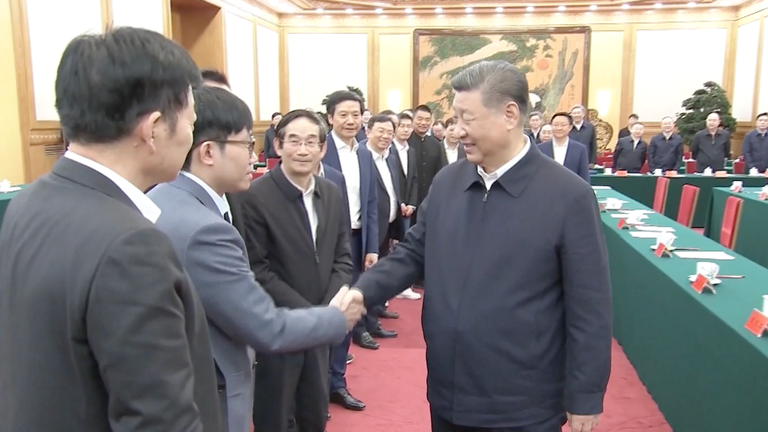AI Expert Warns: Expect Human Threats from Artificial Intelligence Within Two Years
AI Task Force Adviser: AI Will Threaten Humanity in Two Years
An adviser to a UK prime ministerial task force on artificial intelligence has issued a grave warning: AI could pose a threat to human existence within the next two years. Matt Clifford, in an interview with TalkTV, stated that there is a critical two-year window to impose regulations and controls on AI before its capabilities become unmanageable.
Clifford characterized the immediate risks as alarmingly significant. “Today, AI can be utilized to develop new bioweapons or orchestrate extensive cyberattacks,” he cautioned. The potential hazards posed by AI, he noted, could result in significant loss of life — although not total annihilation — concerning anticipated advancements in AI over the next two years.
As chair of the government’s Advanced Research and Invention Agency (ARIA), he underscored the necessity for a robust regulatory framework to ensure the safety of AI systems. During the interview, he drew attention to AI’s rapidly expanding capabilities and underscored the urgent need to confront the associated dangers. Without proper regulations, these systems could soon escalate in power, leading to both immediate and long-lasting threats.
Clifford referenced an open letter signed by 350 AI experts, including OpenAI’s CEO Sam Altman, which likens AI risks to existential threats such as nuclear weapons and pandemics. He elaborated that the concerns raised involve creating a new intelligence that surpasses human capability.
He stressed the importance of understanding and managing AI models, highlighting the significant uncertainty surrounding their behaviors. “We must establish audit processes before deploying powerful models, as many leaders in AI development advocate,” stated Clifford. “Our focus must now shift to how we can effectively control these models, a capability we currently lack.”
Across the globe, regulators are facing the complex challenges posed by the rapid evolution of AI. Their objective is to find a balance between safeguarding users and fostering innovation. In the UK, a member of the opposition Labour Party echoed sentiments from the Center for AI Safety’s letter, advocating for AI to be regulated similarly to pharmaceuticals and nuclear energy.
During a recent visit to the US, UK Prime Minister Rishi Sunak expressed intentions to establish a global AI oversight body based in London. He mentioned that he is “carefully considering” the extinction risks associated with AI. Meanwhile, the EU has proposed mandatory labeling for all AI-generated content to combat misinformation.
With limited time to act, it is essential for policymakers, researchers, and developers to come together to promote responsible AI development and deployment, taking into account its potential risks and implications.
For those interested, the full interview with Clifford can be viewed below.
(Photo by Goh Rhy Yan on Unsplash)
To bridge the AI execution gap, organizations must prioritize developing comprehensive AI strategies. This includes investing in training and development to upskill teams, fostering collaboration among stakeholders, and creating a clear roadmap for implementation.
Moreover, establishing metrics for success can help track progress and refine approaches as needed. With structured insights and a commitment to best practices, companies can enhance their chances of successfully deploying AI solutions.
Artificial Intelligence and Machine Learning in Various Fields
Machine learning continues to play a significant role in enhancing cloud-native container security, boasting 41,252 views.
Innovative applications of machine learning are transforming business processes, particularly in finance and logistics, with 14,310 views recorded.
Concerns have arisen over AI and bots being potentially used to artificially inflate music streaming numbers, which has drawn 12,160 views.
Additionally, partnering with outsourced developers brings numerous benefits in the space of artificial intelligence, accumulating 10,391 views.
AI Developments: A New Era
Artificial General Intelligence (AGI) is now considered a reality, marking a significant transformation in the realm of technology. This new era brings not only advanced capabilities but also profound ethical considerations and societal implications. Industry pioneers, such as Sam Altman from OpenAI, believe that we have entered the age of superintelligence, where enhanced artificial intelligence systems will greatly influence various sectors.
Mistral AI’s Challenge to Big Tech
Addition to this evolution, the emergence of Mistral AI showcases a new reasoning model that poses a direct challenge to established tech giants. Their approach in harnessing AI technology raises questions about innovation and competition within the industry, pushing existing companies to adapt or be overshadowed by this fresh contender.
Understanding AI and Blockchain
Alongside these advancements, the concept of AI blockchain is gaining traction. This technology integrates artificial intelligence with blockchain, creating a system that could revolutionize data security and transaction efficiency. However, understanding the implications and potential of this combination is still a developing field.






